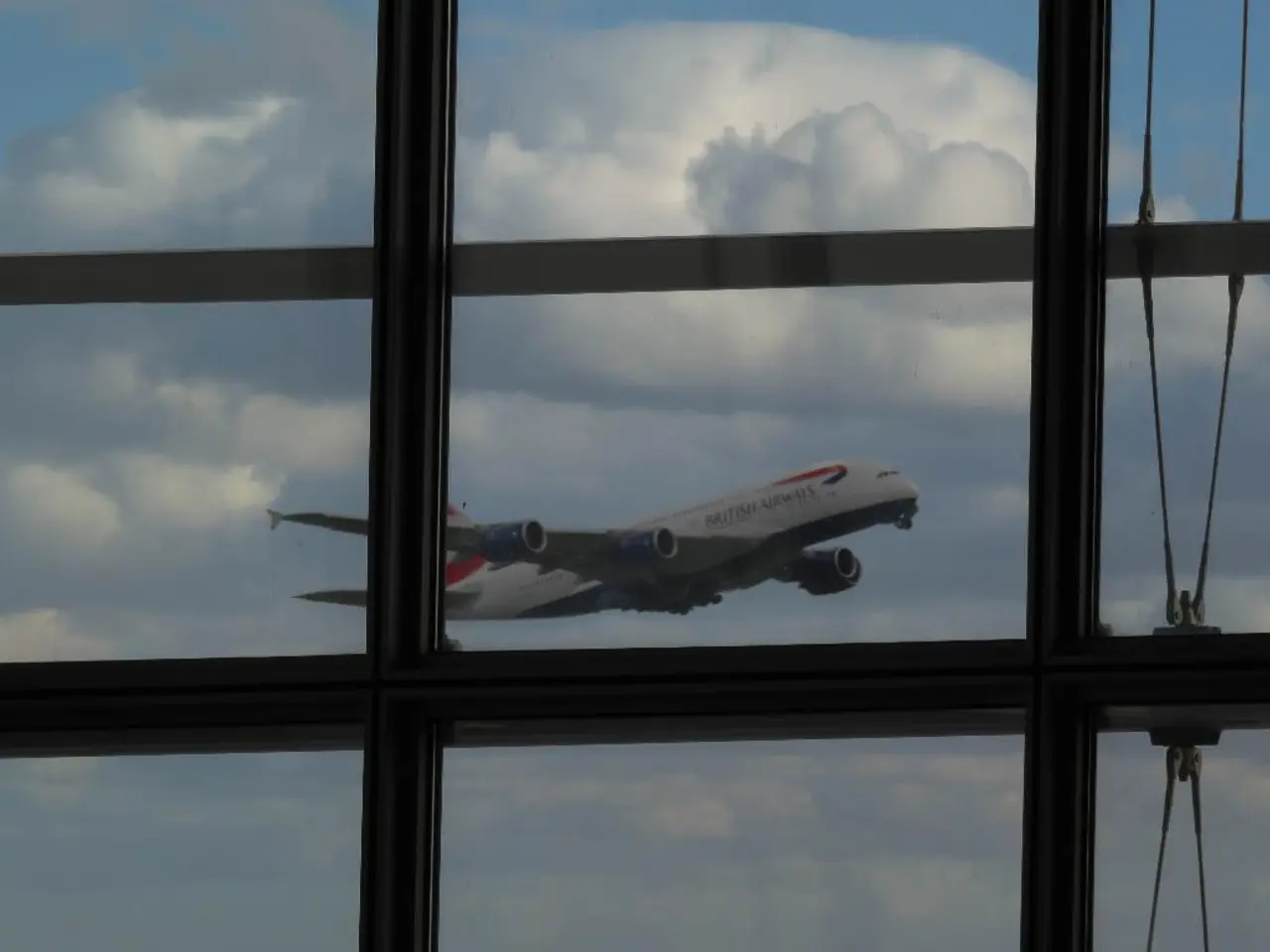Supersonic flight nearing reality as NASA tests X-59 model in wind tunnel
**Breakthrough Wind Tunnel Tests for the X-59 Quiet SuperSonic Technology (QueSST) Aircraft**
After a decade of development, the X-59 Quiet SuperSonic Technology (QueSST) aircraft, dubbed the 'Concorde with a silencer', has taken a significant step forward with recent wind tunnel tests conducted by NASA and its partner, the Japanese Aerospace Exploration Agency (JAXA) [1][2][3]. The tests were carried out at the Chofu facility in Japan, with previous tests taking place at NASA’s Glenn Research Center in Ohio.
The wind tunnel experiments focused on simulating the aerodynamics and acoustic signature of the full-scale X-59 at its planned cruising speed of Mach 1.4, approximately 925 mph [1][2]. A 19-inch-long, 1.62% scale model of the X-59 was used for the tests, ensuring that the results are directly applicable to the actual jet’s performance.
Key findings from the wind tunnel tests include:
1. **Aerodynamic and Acoustic Validation:** The tests confirmed that the X-59's distinctive needle-nose and tailored wing design effectively scatter shock waves, resulting in a much quieter “thump” sound rather than the sharp sonic boom traditionally associated with supersonic flight [1]. This finding is a crucial milestone, as it empirically validates the design’s potential to reduce noise impact on communities below. 2. **Comparison with Computer Models:** The collected data allowed NASA researchers to cross-validate real-world wind tunnel results against sophisticated Computational Fluid Dynamics (CFD) predictions. This ensures that the aircraft's design not only meets theoretical expectations but also performs as intended under real operating conditions [1][2]. 3. **Milestone for Program Success:** NASA described these tests as an important milestone for the X-59 program, marking a significant step toward enabling quiet supersonic flight. The success of these tests supports the readiness for upcoming flight tests in the Quesst mission, which seeks to gather data for potential regulatory changes allowing supersonic commercial travel over land [1]. 4. **Multi-Location Testing:** In addition to the Chofu facility, previous wind tunnel tests were conducted at NASA’s Glenn Research Center in Ohio, indicating a comprehensive, multi-phase validation process [2].
These results are a strong indication that the X-59’s design could make overland supersonic flight a realistic possibility, by minimizing the disruptive sonic boom and potentially changing aviation regulations worldwide. The wind tunnel test data will be critical for optimizing the full-scale X-59 before its first flight and for supporting future commercial supersonic aircraft designs.
[1] NASA (2023). X-59 Quiet Supersonic Technology Wind Tunnel Tests. [online] Available at: https://www.nasa.gov/feature/x-59-quiet-supersonic-technology-wind-tunnel-tests [2] JAXA (2023). X-59 Wind Tunnel Tests at Chofu Facility. [online] Available at: https://global.jaxa.jp/press/2023/03/20230325_x59_en.html [3] Autoevolution (2023). X-59 Quiet Supersonic Technology: Wind Tunnel Tests Complete. [online] Available at: https://www.autoevolution.com/news/x-59-quiet-supersonic-technology-wind-tunnel-tests-complete-162716.html
- The X-59 Quiet SuperSonic Technology aircraft, often compared to airplanes, could revolutionize aviation thanks to technology, as the wind tunnel tests have shown that its design, from the needle-nose to the tailored wing, is effective in minimizing the traditional sharp sonic boom associated with supersonic flight, making supercars seem quiet by comparison.
- The success of the wind tunnel tests, a result of collaboration between NASA and JAXA, not only validates the science of reducing noise impact on communities below but also paves the way for the use of technology in enabling quiet supersonic air travel, potentially changing travel regulations worldwide.
- The wind tunnel tests have also demonstrated the efficiency of using Computational Fluid Dynamics (CFD) in designing aerodynamically sound aircraft, further showing the potential of technology in improving both existing and future airplane designs, from commercial travel planes to space-and-astronomy vehicles.
- The upcoming flight tests for the X-59, as part of the Quesst mission, will be instrumental in gathering data that could lead to regulatory changes allowing commercial travel by airplanes at supersonic speeds over land, breaking the traditional boundaries of air travel and ushering in a new era of quiet, efficient, and technologically advanced air transportation.




